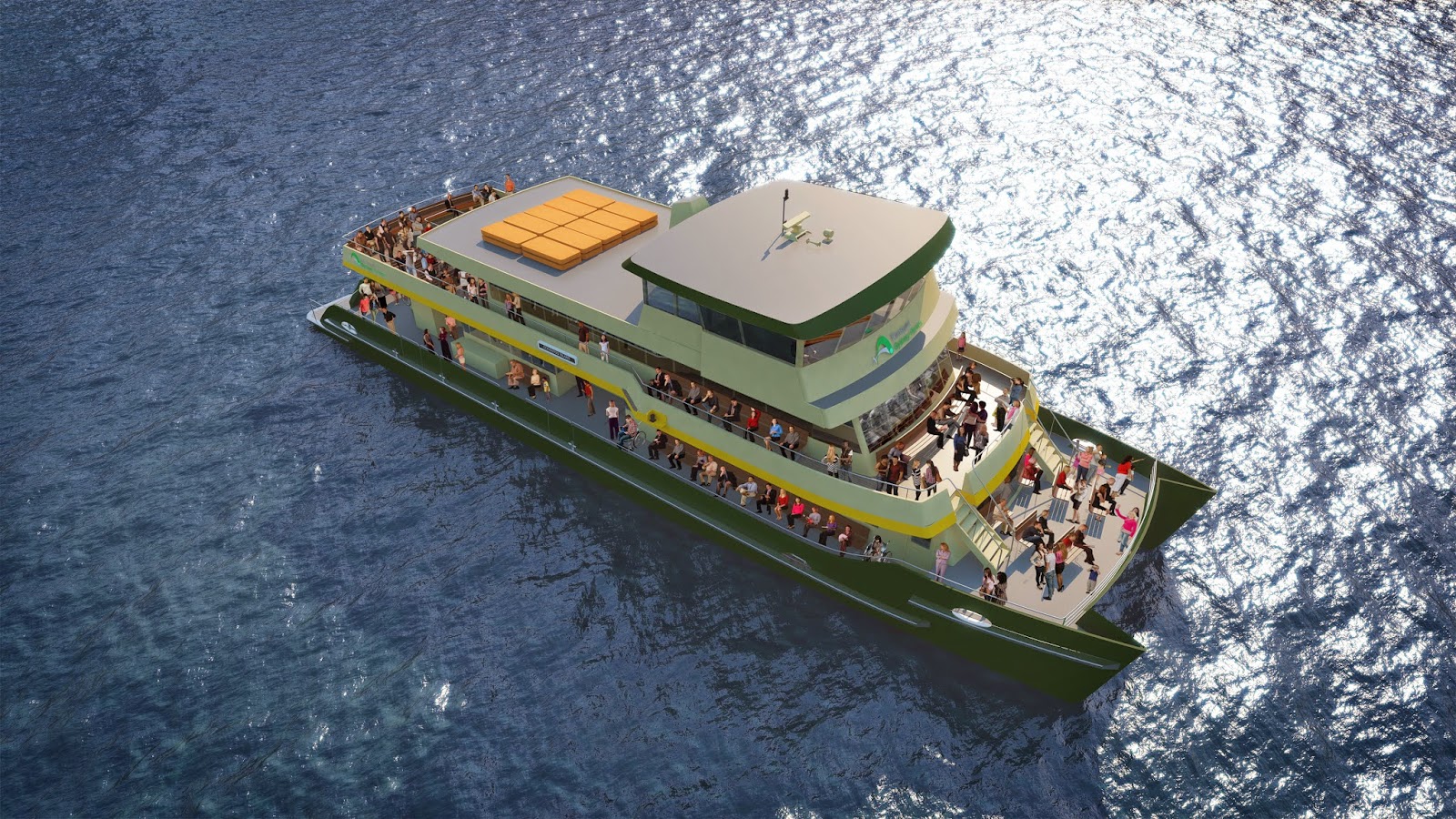The Barangaroo terminal can probably manage 7.5 minute headways for the Darling Harbour Line. But what are the implications for other Darling Harbour line stops, especially if all initiatives in the Sydney's Ferry Future plan are taken into account? Currently all services on the Darling Harbour Line also stop in both directions at Milsons Point, McMahons Point and Balmain East.
The Ferry Future plan was released by the NSW Government in May 2013. A close reading shows a significant change to the role of Balmain East wharf, currently a quiet little place with two berthings per hour on week-days in the direction of Darling Harbour and two per hour in the direction of Circular Quay. The Ferry Future vision is that it becomes an interchange for three lines - Parramatta, Woolwich and Darling Harbour.
The consequences of this, in combination with the threefold increase planned in Darling Harbour services, are enormous. As shown in the table below, Balmain East departures in the AM peak periods will increase sevenfold - from four per hour to 28 per hour. That's one ferry departure every two minutes!
 |
| Darling Harbour Line departures in 2016 based on the assumption that the Darling Line will continue to be an all stops service. |
Even with the dual berthing planned in the upgraded BaImain East Wharf, berthing conflicts in the timetable are inevitable, forcing vessels to be held off the wharf waiting for the previous ferry to depart.
There is also the impact of additional wash on the sea wall at Balmain East from the increase in vessel movements.
It is time for some re-thinking to be done on the Sydney Ferry Future plan. An increase in service frequency is a good thing, but there is a point where the network reaches overload. Departures every two minutes is neither justified by demand nor operationally sustainable.




























